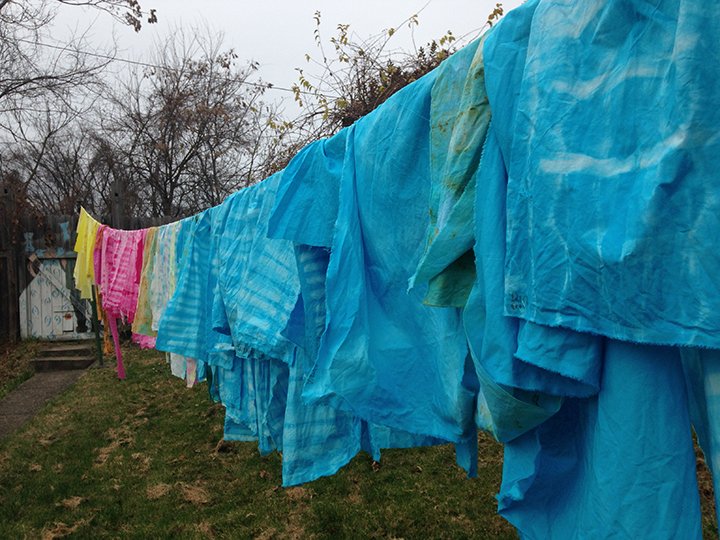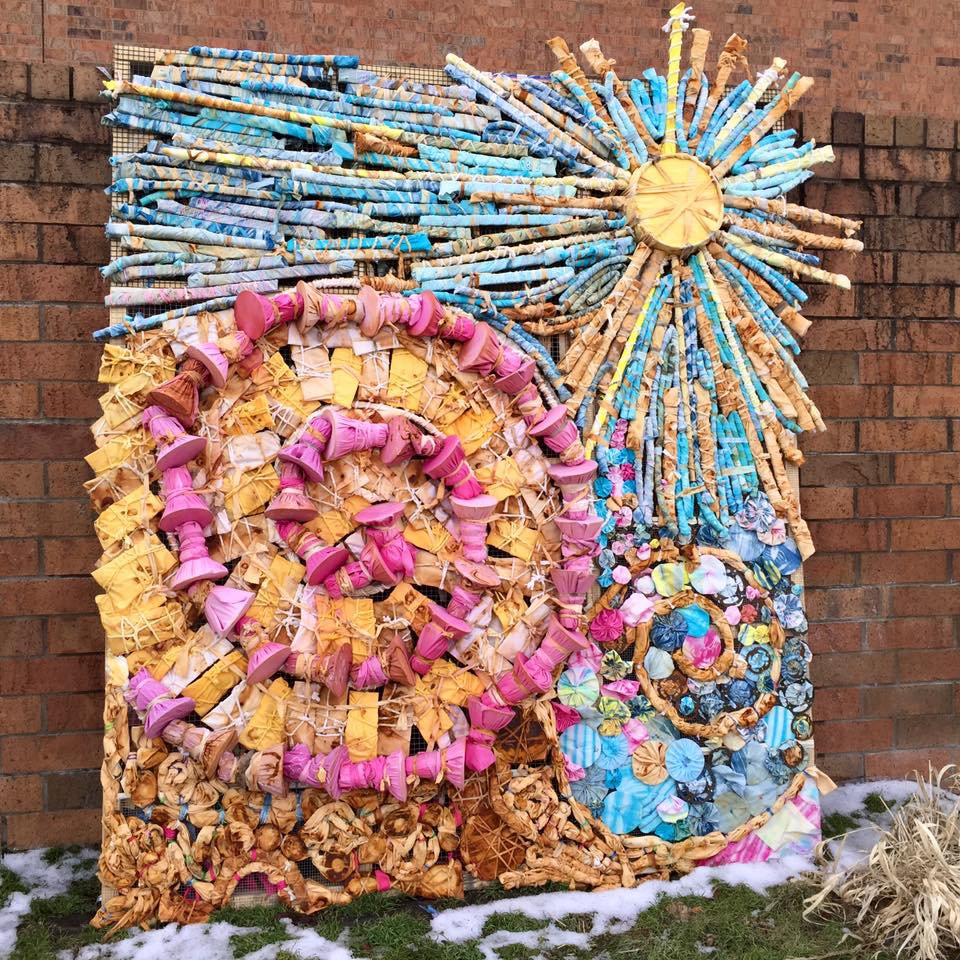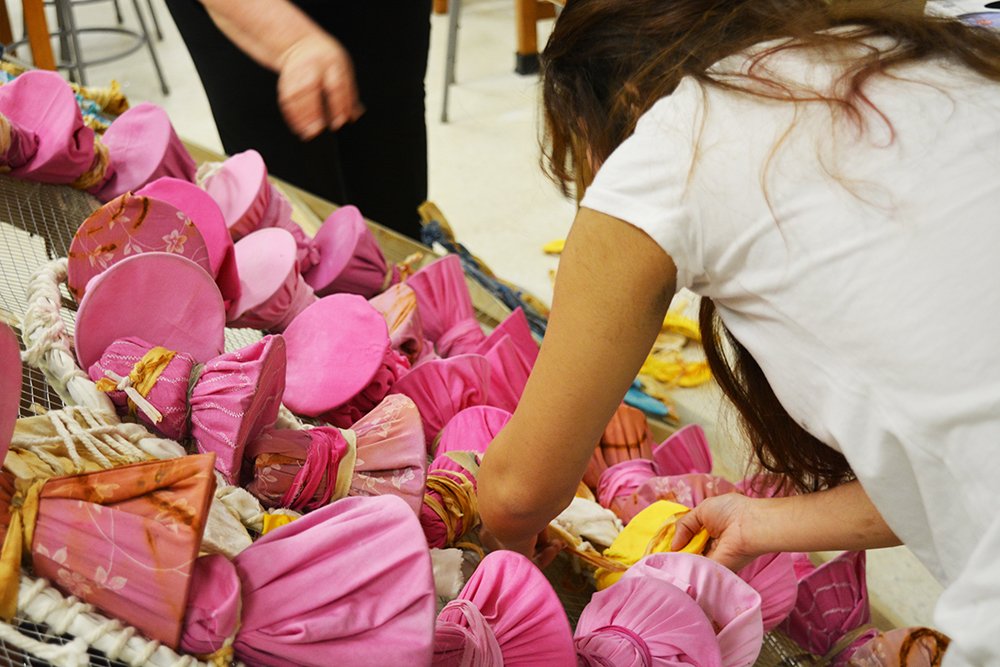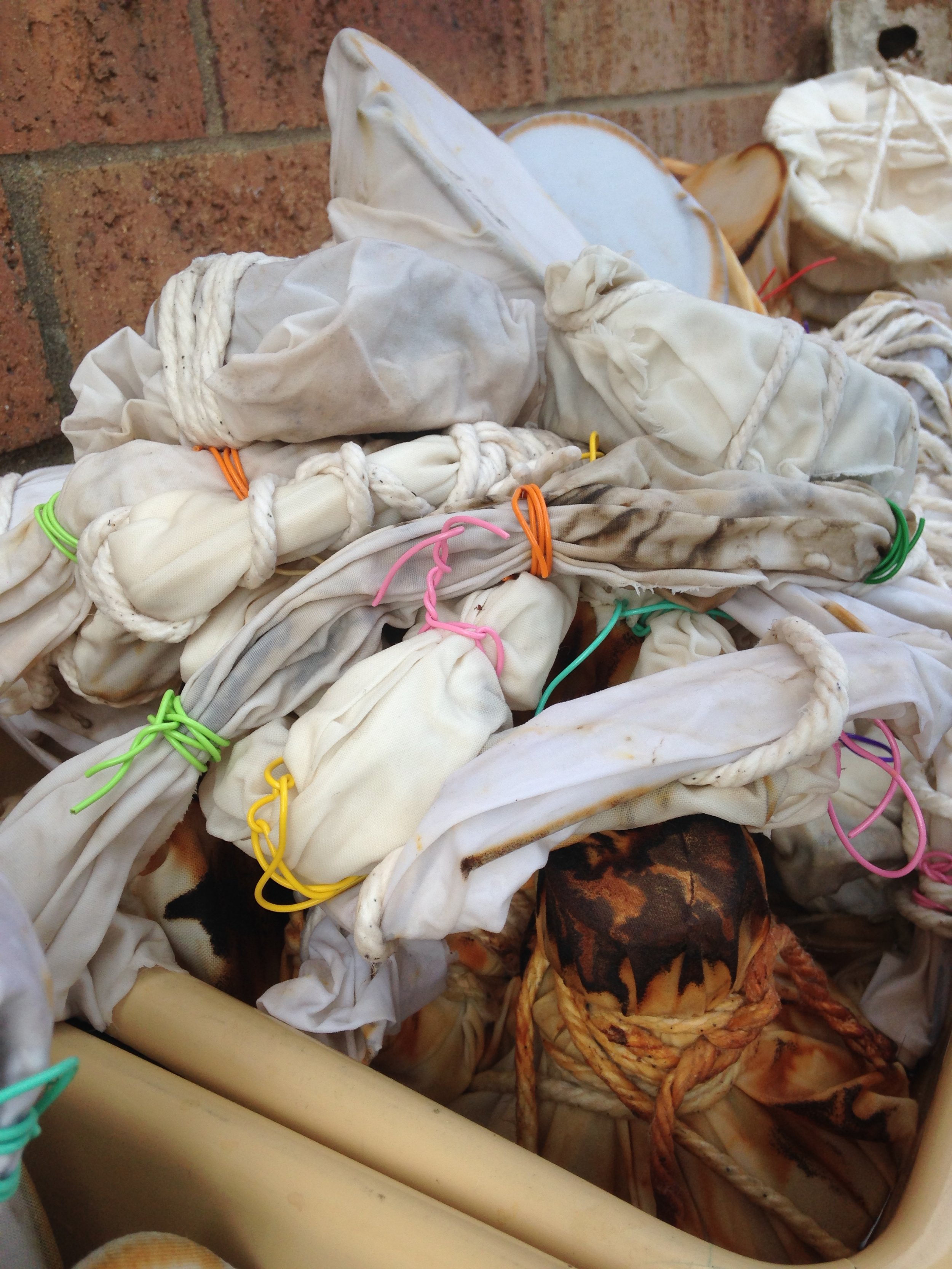
A beautiful collaboration between 2 artists, 2 non-profits, a high school, an arts specialist, and her students.
Traditionally, the Fiberarts Guild of Pittsburgh has sponsored an Artist Residency Project during a Fiberart International exhibition year. Artist Residency Projects are a part of the Pennsylvania Council on the Arts' Arts-in-Education Division. Pittsburgh Filmmakers/Pittsburgh Center for the Arts (PF/PCA) is the regional Arts in Education Partner serving Allegheny, Beaver, Greene, and Washington counties by providing administrative and financial support for residency projects as well as other vital arts services through the Artists in Schools & Communities department.
I had the honor, along with fellow artist Rose Clancy, to work on a Residency Project with Pittsburgh Brashear High School for FI 2016.
Using Pop des Fleurs as our jumping off point, the concept for the Brashear Winter Garden was developed collaboratively between the artists, with input from Lauren Sims (FI '16 Director) and Jennie Canning (Brashear's art teacher). Wonderfully, Brashear has a Fiberarts program, so it was decided the core group of students we would work with would be the Fiberarts 1 & 2 classes.
A main component of the Artist Residency Program is that Resident Artists bring the art forms and processes that they use in their professional practice to the classroom. I am a surface pattern designer and visual artist, and Rose is an installation artist and sculptor,.We had many brainstorming sessions on how to combine our techniques into an art experience and final piece. It was very important for all involved that the project be firmly connected to Pop des Fleurs, teach historical aspects of fiber art, and emphasize the logistics and parameters of outdoor public art.
Rose came up with an idea to create a mosaic-style installation that could be installed outside the school using the raised landscaped beds, and a brick wall as support. Since many of our professional techniques are time-based (rust dyeing, indigo dyeing, etc...) we also included rusting and natural dyes in the mosaic, so that the piece would change over time like a real garden.
As we hoped, the piece was installed in January outside of the school. We enlisted the help of 9 students from the Wood Shop/Engineering classes and their teacher to help install the work. Several of the Wood Shop students remarked they never had gotten into art, but could now see the appeal!
As we were finishing up, school let out for the day. Instantly, we heard positive comments about the "Art Wall". Teachers, parents & administrators have taken photos of the work and posted positive feedback on Facebook. Pittsburgh Public Schools commended the project on their Facebook page. There is a sense of excitement that people from the community cared enough about the school and students to create a project specifically for them to enjoy and take pride in.
As one of the artists involved, this project has been a source of wonder and exploration. It gave me a deeper understanding of collaboration with multiple groups, of how to combine techniques and how to let art move along it's own path. It's also amazing to see the breadth of people that a project of this scale affects. As Mary Brenholts, Director of Artists in Schools & Communities explains, "Imagine a spiral. At the center are the Resident Artists, the teachers in the classroom, the core group(s) of students and administrators...as the spiral grows it collects students in other classrooms, more teachers, others who work in the school...then, parents and visitors are affected, the larger community, perhaps local businesses, legislators and beyond...that's the deeper, positive, and more far-reaching effect of Artist Residency Projects in schools."










